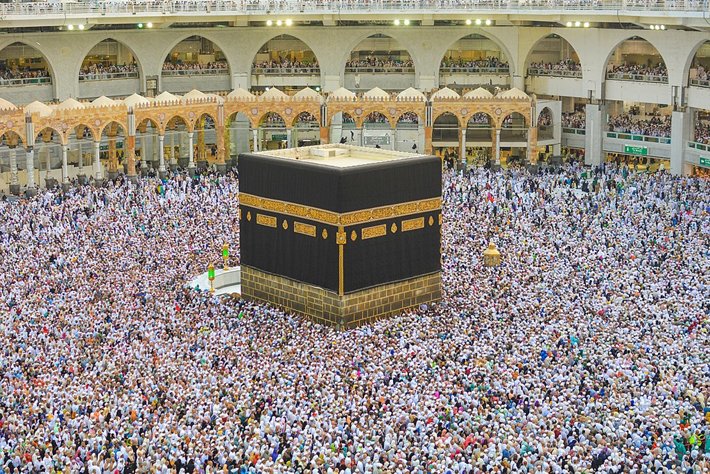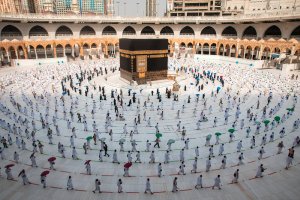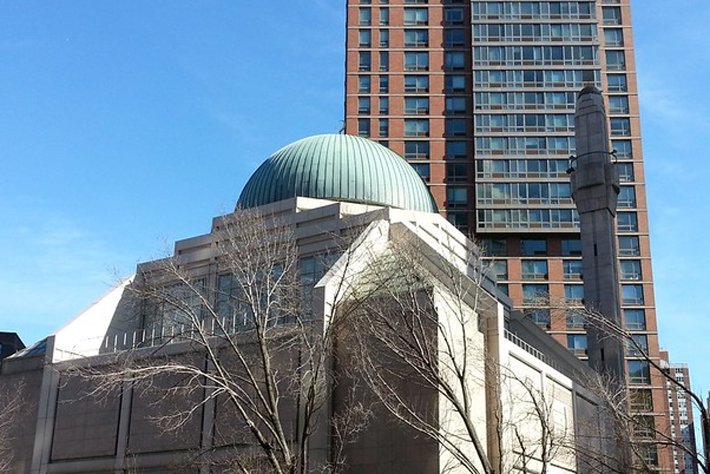Large numbers of Muslim pilgrims began arriving in the sacred city of Mecca in Saudi Arabia on June 23, ahead of the upcoming Hajj, marking the return of the annual Islamic pilgrimage to its grand magnitude after three years of significant limitations due to the COVID-19 pandemic.

According to Saudi officials, nearly 1.5 million foreign pilgrims had already arrived in the country, the majority of them by air. Additional arrivals were anticipated, and hundreds of thousands of Saudis and individuals residing in Saudi Arabia will also participate in the pilgrimage.
Saudi officials anticipated that the number of pilgrims will return to levels seen before the pandemic. In 2019, more than 2.4 million Muslims participated in the pilgrimage—in stark contrast to the less than 10,000 pilgrims who undertook the Hajj in 2020 shortly after the pandemic hit in March of that year.
On June 23, a Friday, a multitude of pilgrims gathered at the Grand Mosque in Mecca for the weekly congregational prayers. Thereafter, many performed the ritual circuit of walking seven times around the Kaaba, the sacred cube-shaped structure at the heart of the Grand Mosque, which holds great significance in Islam.
The night of June 22 witnessed a crowded marble court surrounding the Kaaba. Devotees walked closely together, in striking contrast to the scenes from two years ago during the peak of the pandemic. At that time, the sparse number of pilgrims maintained significant distance from one another in the nearly empty court while performing the circuit.
The Hajj, one of the fundamental pillars of Islam, requires all Muslims, provided they possess the physical and financial means, to embark on this sacred journey at least once in their lifetime. As one of the largest religious gatherings worldwide, the pilgrimage holds immense significance.
Amid scorching temperatures of up to 107 degrees Fahrenheit on June 23, pilgrims shielded themselves from the sun, using umbrellas as they walked from bus lots to the central area of the Grand Mosque in Mecca.
Along the way, they encountered security barricades strategically placed to manage the massive influx of people, leading to occasional jostling. Hailing from various corners of the globe, numerous pilgrims also flocked to nearby shops and malls to purchase souvenirs.
To participate in the Hajj, pilgrims are required to enter a state of spiritual purity known as “ihram.” This entails specific attire for both men and women. Men wear seamless white robes, which symbolize equality and foster unity among individuals of different economic backgrounds. Women cover their bodies and hair as part of the prescribed dress code.
From its beginnings, the Church of Scientology has recognized that freedom of religion is a fundamental human right. In a world where conflicts are often traceable to intolerance of others’ religious beliefs and practices, the Church has, for more than 50 years, made the preservation of religious liberty an overriding concern.
The Church publishes this blog to help create a better understanding of the freedom of religion and belief and provide news on religious freedom and issues affecting this freedom around the world.
The Founder of the Scientology religion is L. Ron Hubbard and Mr. David Miscavige is the religion’s ecclesiastical leader.
For more information visit the Scientology website or Scientology Network.


